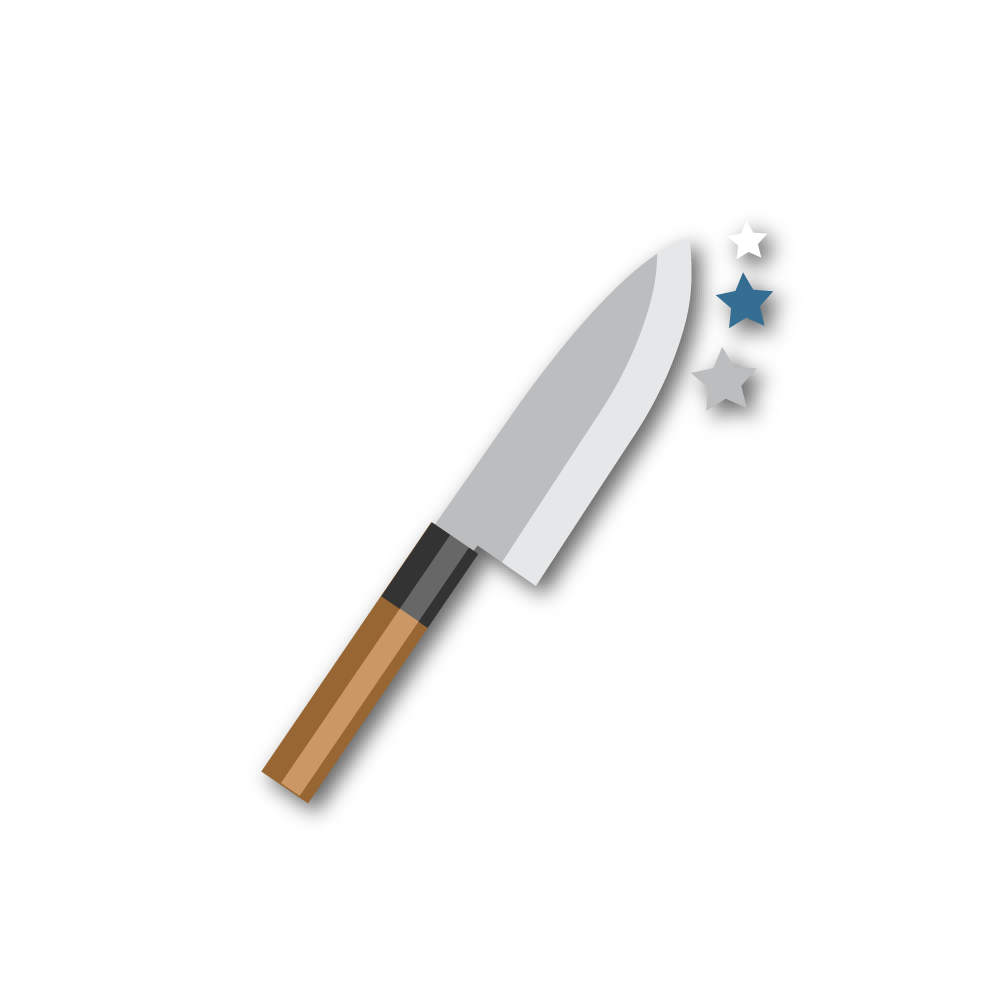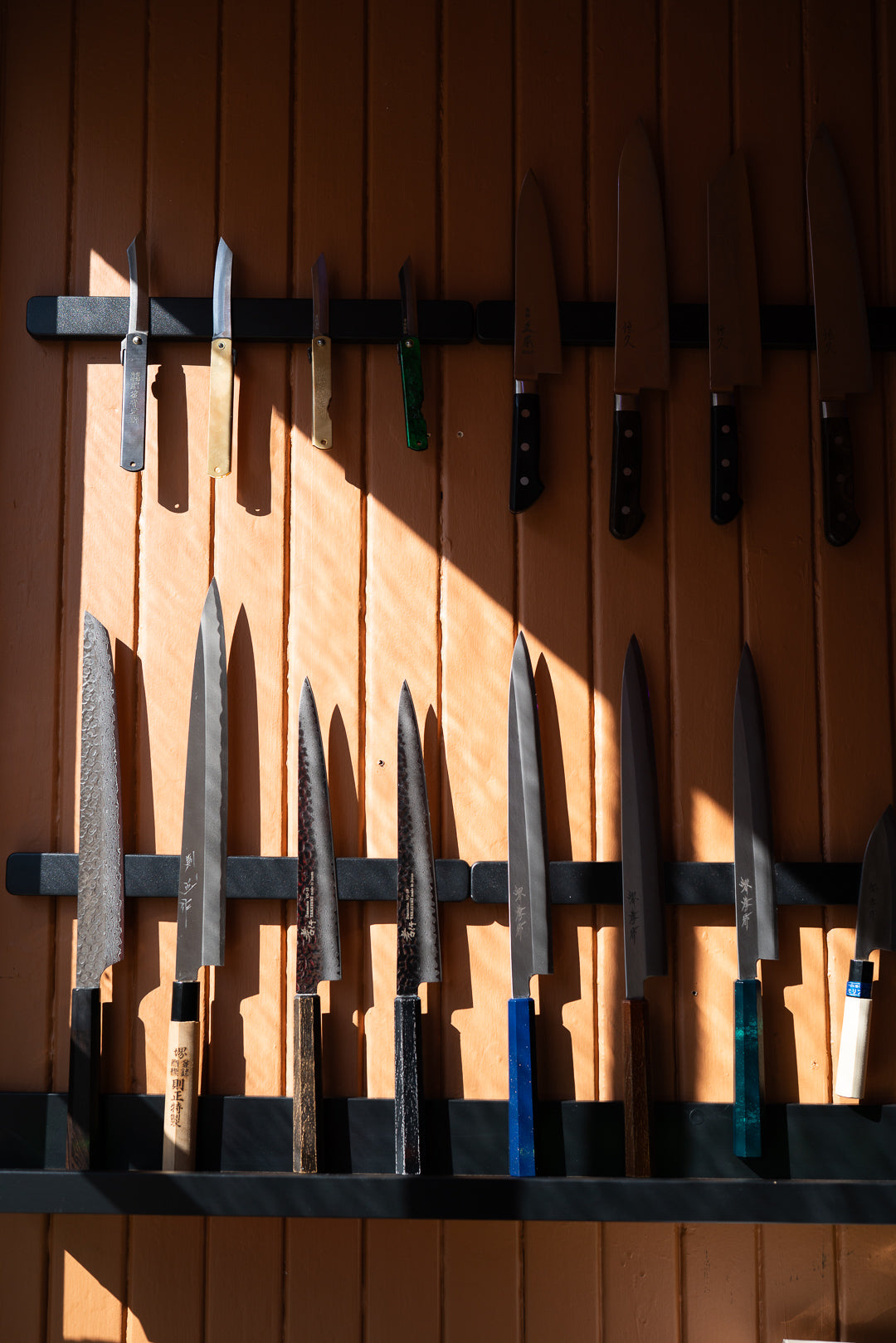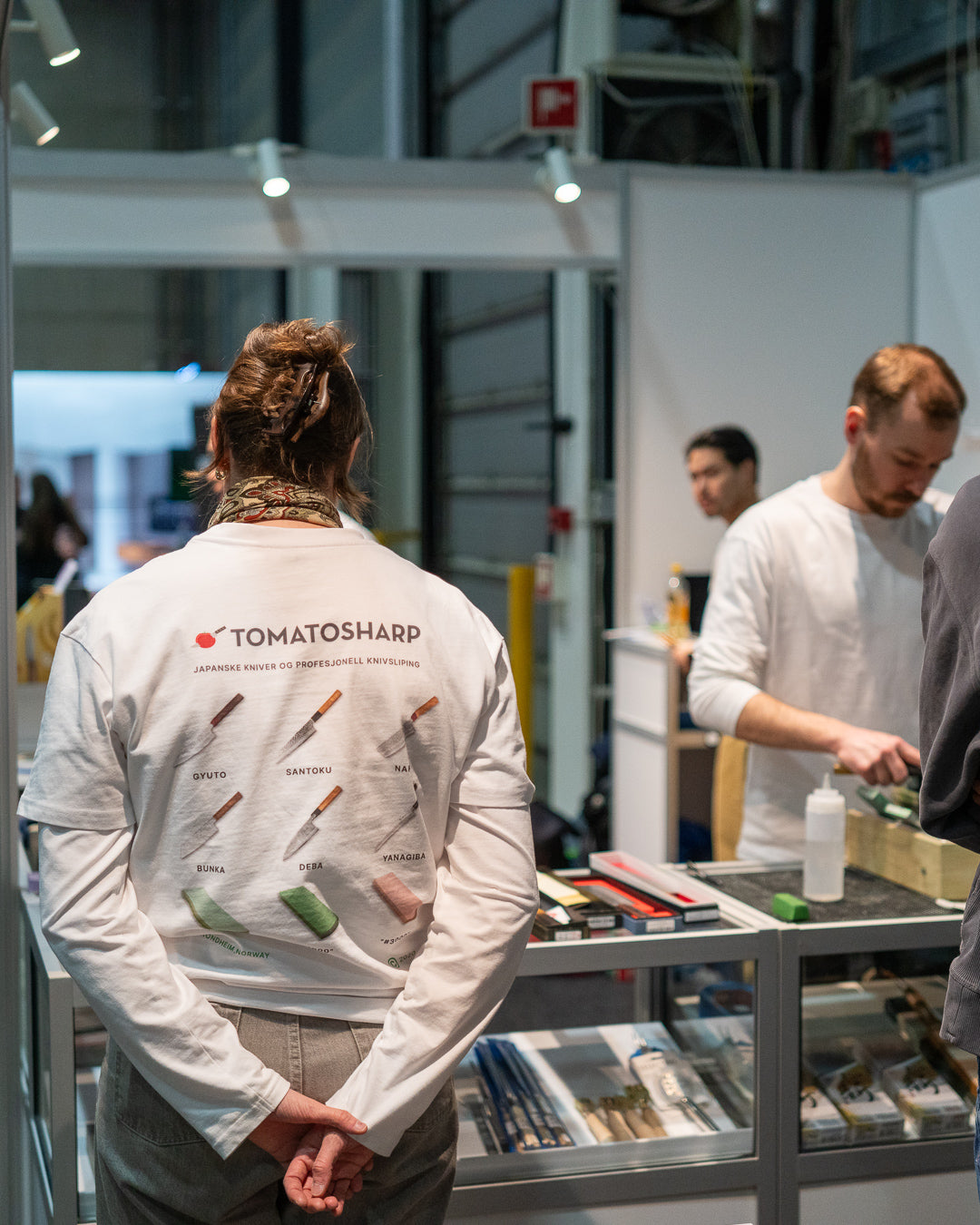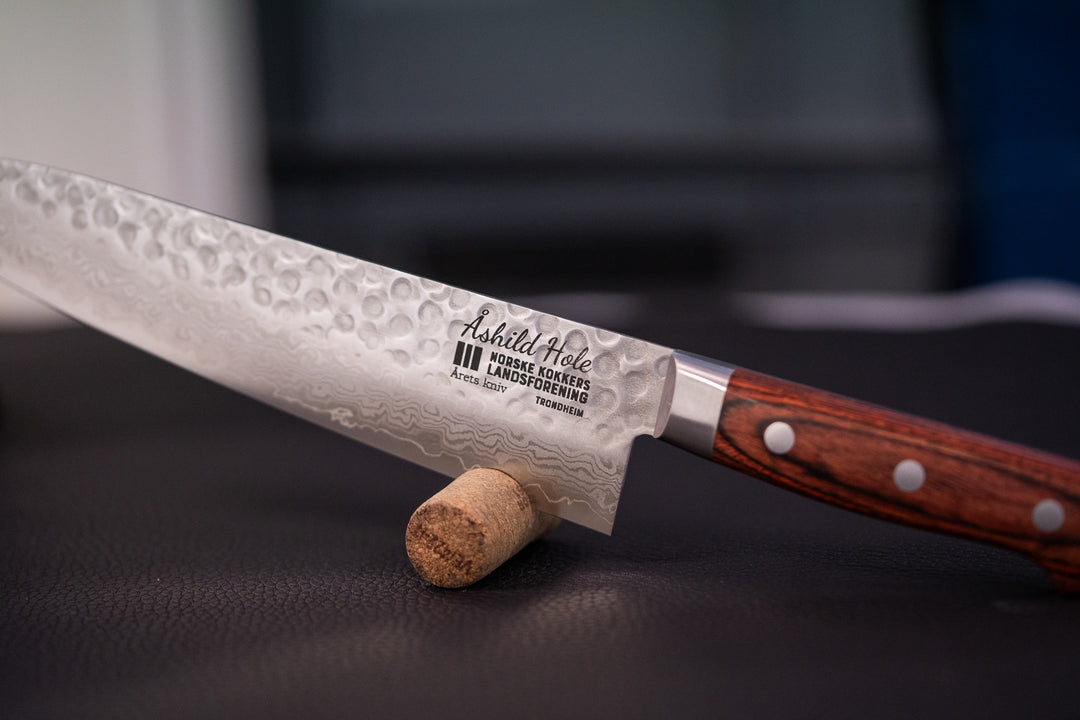OUL Stainless Clad Petty Burnt Oak 135mm
- In stock, ready to ship
- Backordered, shipping soon
Shop nå. Betal med Klarna.

- Levering 1-3 virkedager
- Fri frakt over 1000kr
- 30 dagers åpent kjøp
| Knivtype | Petty / Universal knife |
| Bladlengde | 135 mm |
| Høyre-/venstrehendt | For both |
| Slipefase | 50/50 |
| Håndtak | Burnt oak |
| Hardhet | 63-64 HRC |
| Ståltype | Karbonstål |
| Stål | White #1 (Shirogami #1) |
The OUL Stainless Clad Petty Burnt Oak 135 mm is a stunning precision knife with a beautiful Japanese-style flamed oak handle. It is a work of art as much as it is a knife, and will bring much joy to the kitchen for many years to come.
Steel
Knives made from carbon steel require extra care and maintenance. They must be dried thoroughly after use to avoid rusting. The knives can also develop a natural patina over time, which gives them a unique aesthetic. However, it is important to note that the steel can be somewhat brittle, and it may be more prone to chipping if used on hard surfaces or food.
Shirogami #1, also known as White Steel #1, has a higher carbon content than Shirogami #2. A higher carbon content in the steel makes the knife harder and stays sharp longer, but is more brittle than softer steels.
Stainless clad refers to a protective layer of stainless steel surrounding a core of carbon steel. This is called "san-mai" in Japanese, and involves three layers of material for the blade. The main part of the carbon steel is protected by stainless steel, with only a small portion exposed near the edge of the knife. A simple wipe prevents rust, and over time a protective "patina" forms. This type of knife offers the best of both worlds - easy maintenance thanks to stainless steel, as well as a good edge and easier sharpening with carbon steel at the edge.
En petty er en kniv som er kjent for sin allsidighet og presisjon. Den er mindre enn en kokkekniv og har et smalt, spisst blad. Den er lett å manøvrere og er ideell for detaljert skjæring, skrelling og trimming av frukt, grønnsaker og mindre stykker kjøtt og fisk. Egner seg veldig godt til finkutting av løk og hvitløk.
Et høykvalitets karbonstål med høy karbonandel, kjent for sin evne til å oppnå en ekstremt skarp egg og enkelhet i sliping. Rengjør og tørk umiddelbart etter bruk; unngå langvarig eksponering for fuktighet. Over tid vil stålet utvikle en naturlig patina som forbedrer rustmotstanden og gir bladet karakter.
Bruk
Japanske kniver er vanligvis tynnere og mer delikate enn vestlige kniver, så de er ikke egnet for å kutte gjennom bein, frosne matvarer eller harde gjenstander. Bruk et mykere skjærebrett laget av tre, plast eller gummi og skjær med en rullende bevegelse i stedet for å presse ned med kraft.
Vask og oppbevaring
Vask kniven for hånd med mild såpe og varmt vann umiddelbart etter bruk. Tørk kniven med en myk klut eller et kjøkkenhåndkle for å forhindre rust. Oppbevar kniven på en sikker og tørr plass når den ikke er i bruk. Bruk gjerne en knivblokk, magnetisk knivholder eller knivslirer for å forhindre skader på eggen. Les mer
Vedlikehold
Vi anbefaler å bruke en keramisk brynestav i kombinasjon med en lærstropp for å vedlikeholde / skjerpe eggen. Dette gjør at kniven holder seg skarp mye lenger før den må slipes på stein. Ved sliping anbefaler vi våtslipesteiner for å få best resultat, samtidig som at man fjerner minimalt med materiale.























